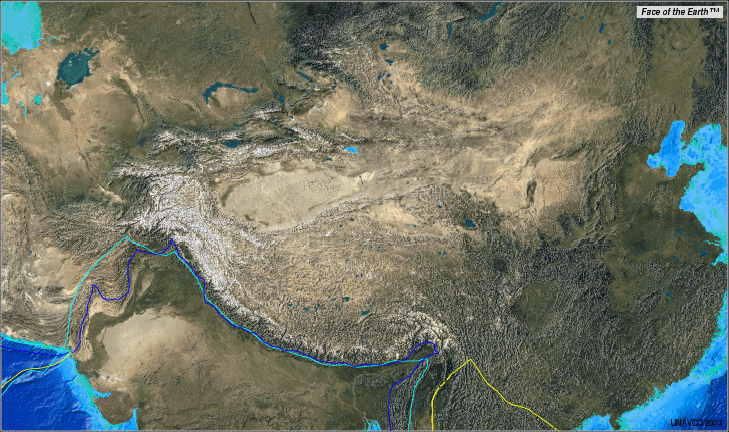Thanks again decimon.
Florida State University geologist Yang Wang was surprised to find thick layers of ancient lake sediment filled with plant, fish and animal fossils typical of far lower elevations and warmer, wetter climates... Paleo-magnetic study determined the sample's age (a very young 2 or 3 million years old)... Major tectonic changes on the Tibetan Plateau may have caused it to attain its towering present-day elevations -- rendering it inhospitable to the plants and animals that once thrived there -- as recently as 2-3 million years ago, not millions of years earlier than that, as geologists have generally believed... "Establishing an accurate history of tectonic and associated elevation changes in the region is important because uplift of the Tibetan Plateau has been suggested as a major driving mechanism of global climate change over the past 50-60 million years," said Yang, an associate professor in FSU's Department of Geological Sciences and a researcher at the National High Magnetic Field Laboratory.
Global warming is BS. ['Civ takes bows as the audience tosses flowers]
"Many of the places we've visited in Tibet are now deserts, and yet we found those thick deposits of lake sediments with abundant fossil fish and shells," Yang said. "This begs the question: What came first and caused the disappearance of those lakes? Global climate change? Or, tectonic change?"
Elsewhere -- Antarctic fossils of temperate plant species which can't survive there, a bit more than 2 million years old.

COMPARISON ALTIPLANO:
The answer may be on another continent — South America. The central Andes, too, are quite high and have an extremely high and dry plateau just east of their summits. And like Eurasia before the Indian plate plowed into it, there is no continent-on-continent collision in South America to explain the mountains and the plateau.
Instead, the Andes were built from the South American Plate riding over the thinner oceanic plates to the west. The crust in the collision zone crumpled and thickened — as in any crash — and now stands taller.
The Altiplano plateau to the east, however, might be made higher by something a bit more complex going on deep in the Earth, DeCelles explained.
It turns out that when the crust thickens, great pressures at the bottom can cause some minerals to rearrange their atoms into tighter-packed molecules. That makes a lot of rock denser than the hot mantle all around it, so it might peel away from the underside of the crust and sink into the mantle.
When that happens, hot mantle material surges up to fill the void — and the crust buoys higher. This not only encourages a plateau at the surface, but it triggers volcanic eruptions as well.
Of course, the new study is just one snapshot from one small part of the central Tibetan Plateau, Ritts cautions.
"It's still just a tiny area in a place that's twice the size of Texas," Ritts told Discovery News. "It's just the tip of the iceberg."



